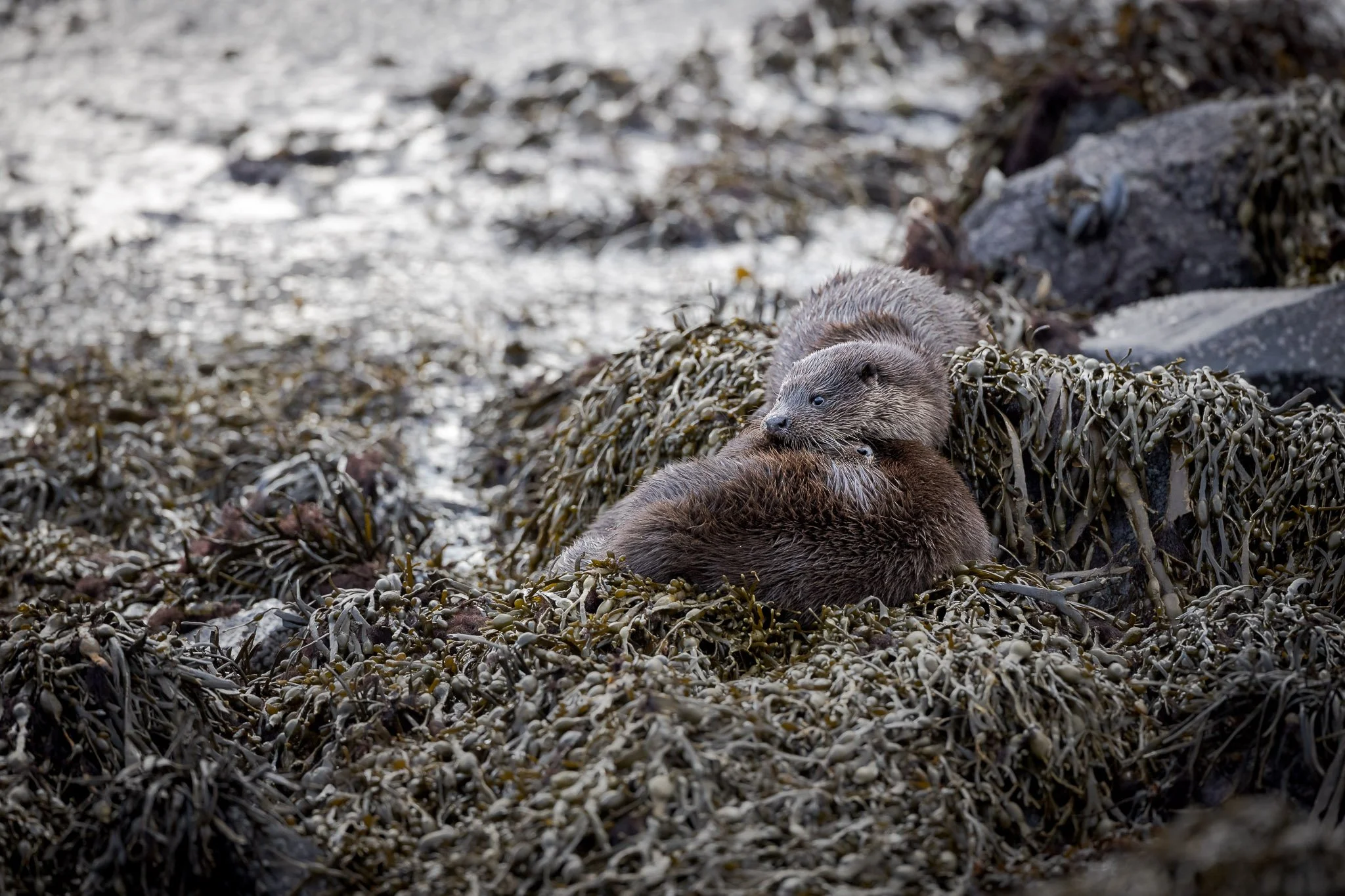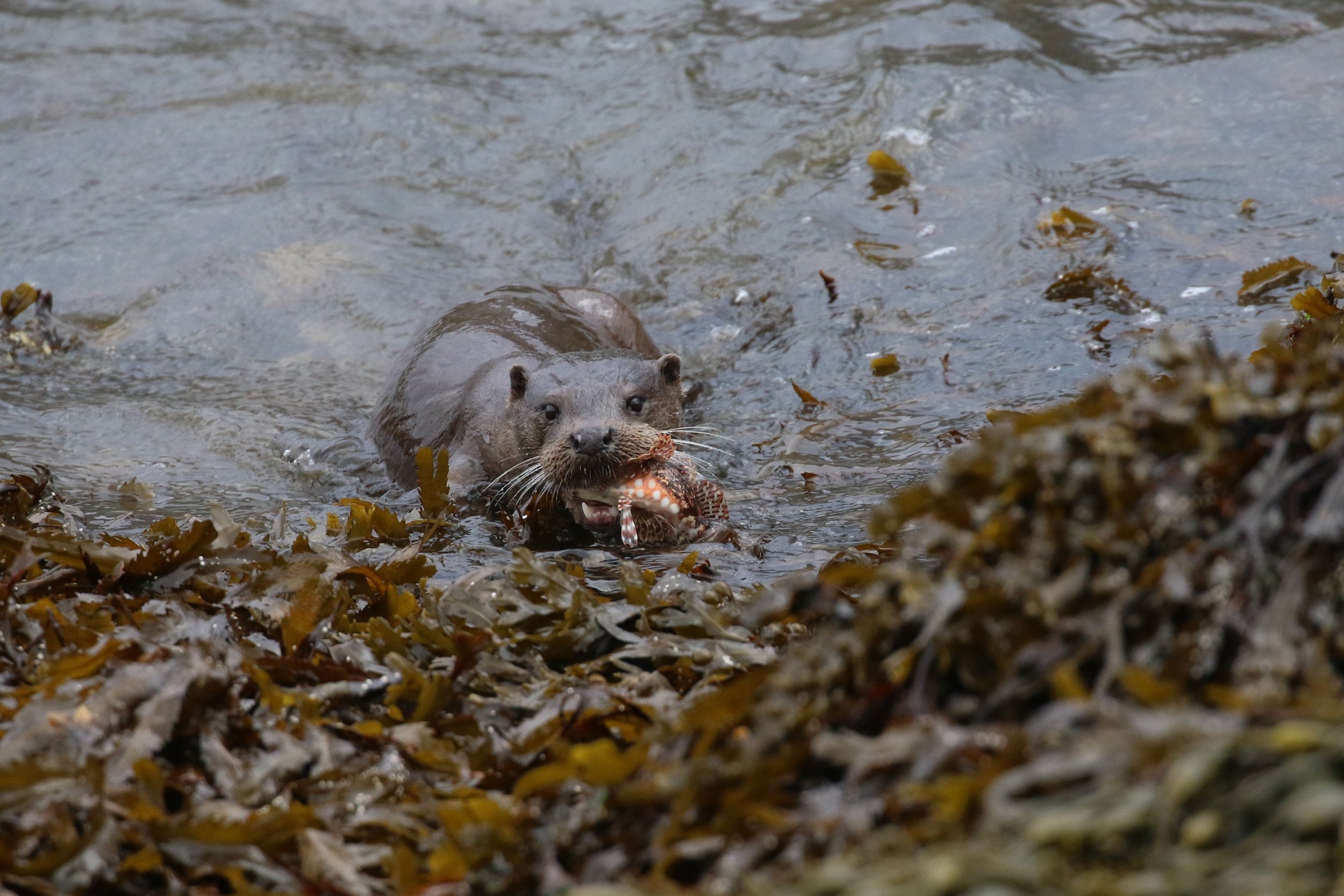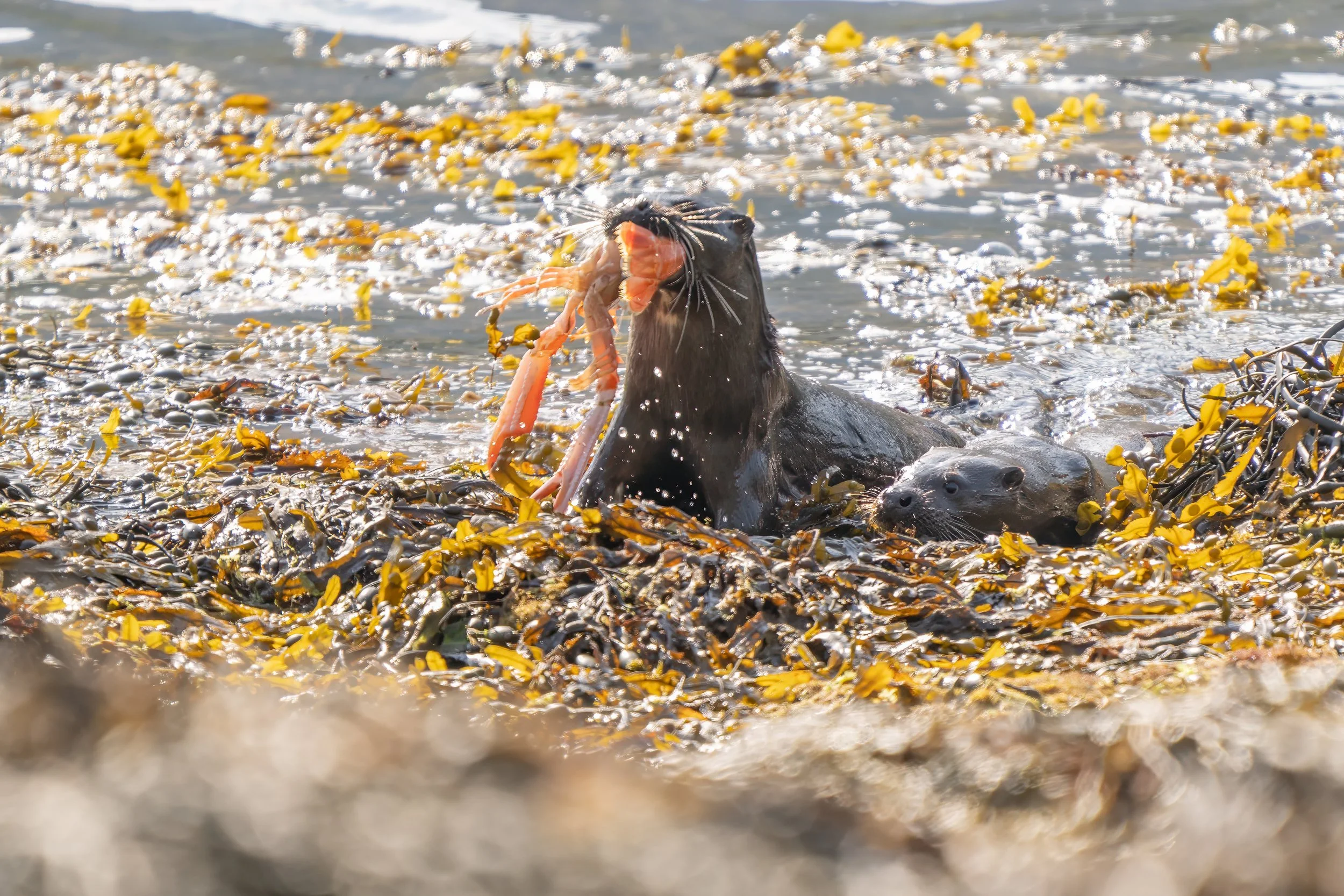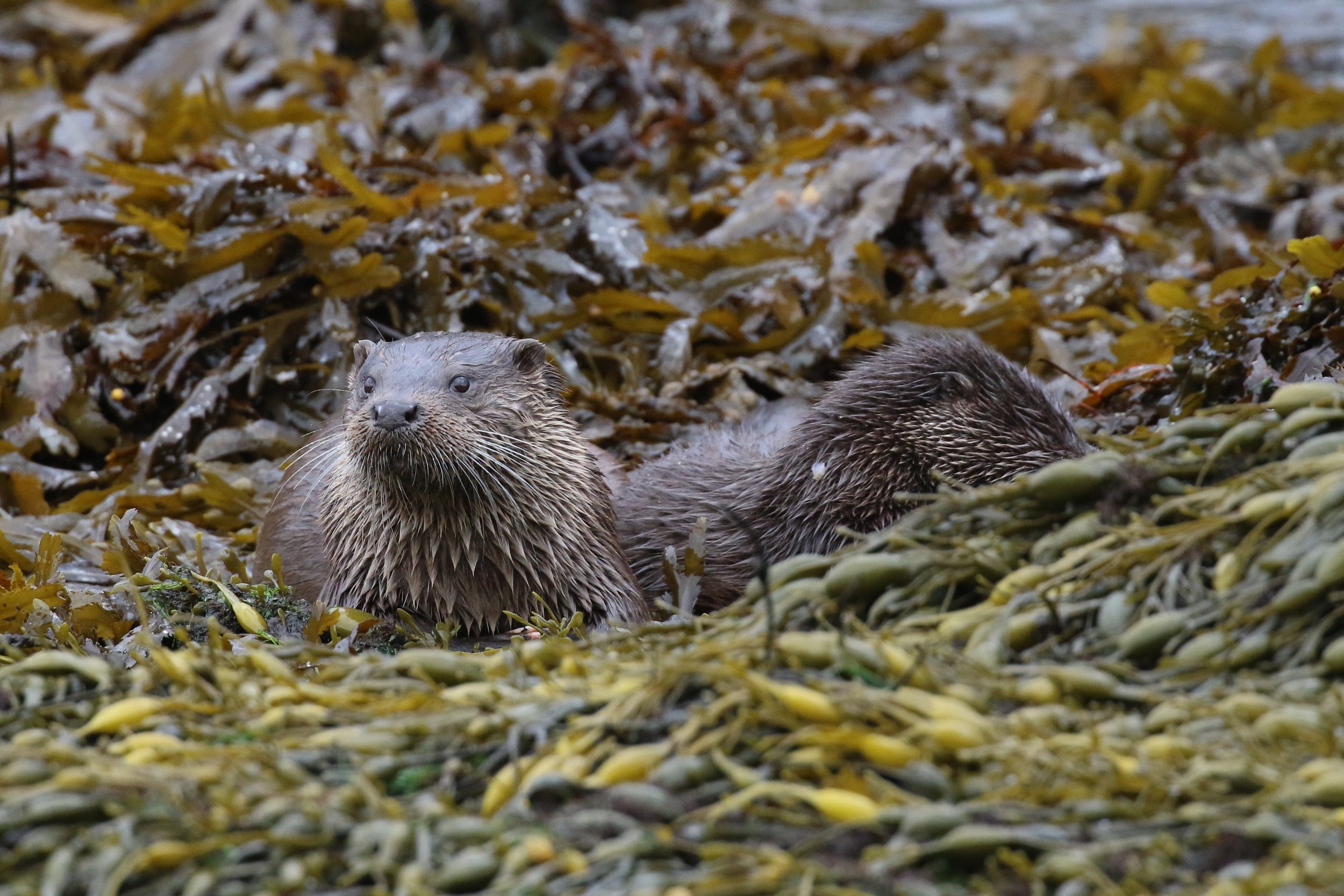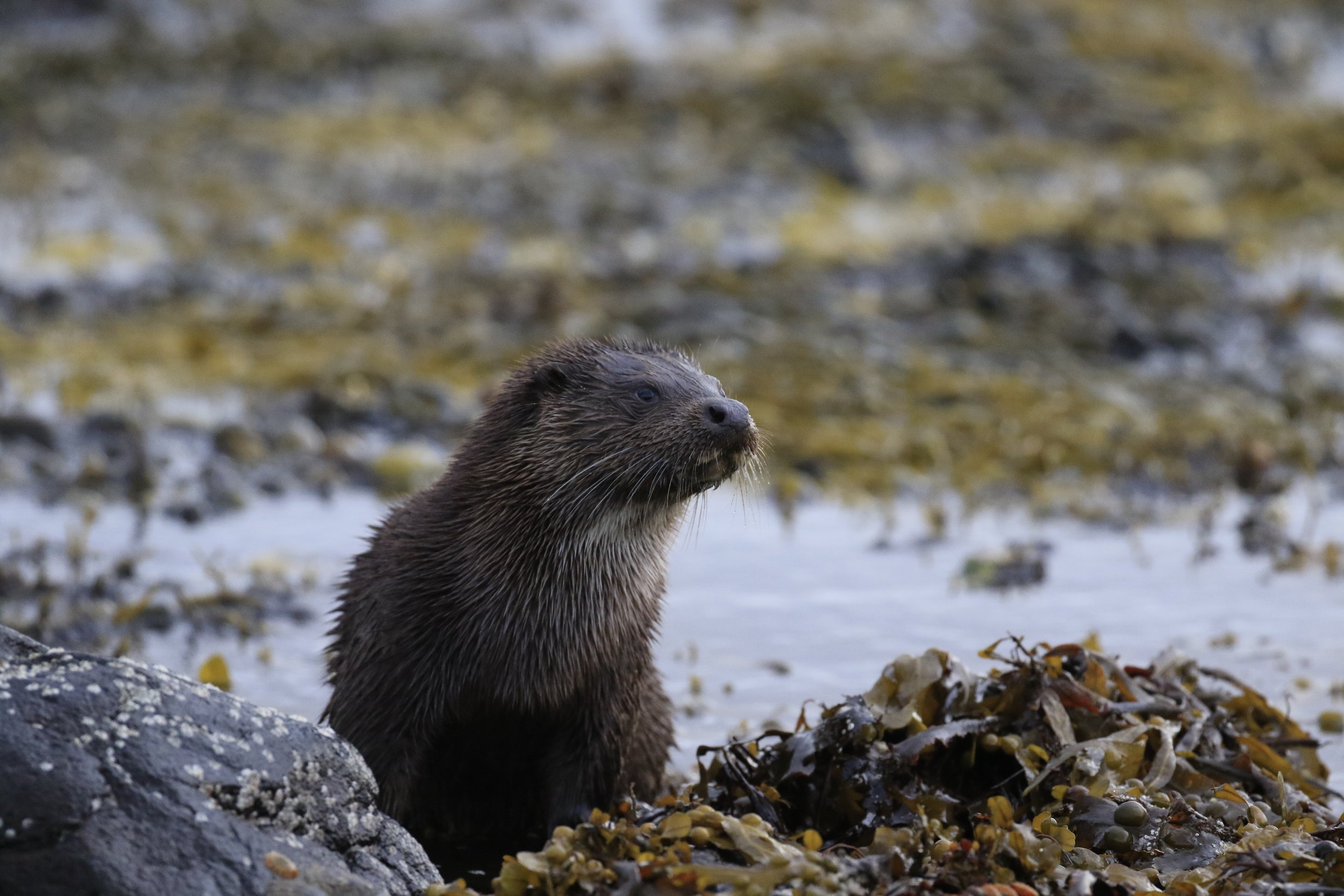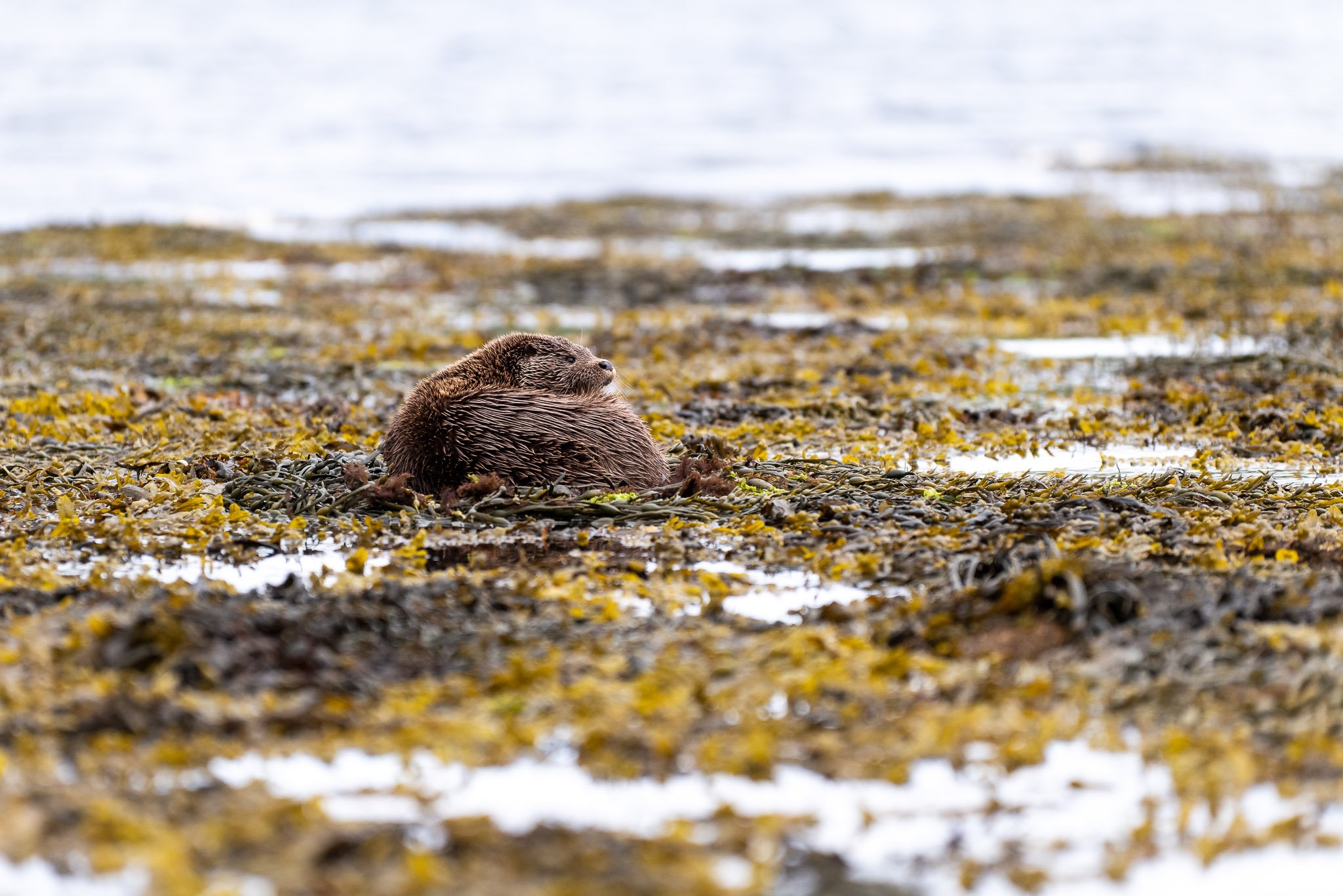
OTTER PHOTOGRAPHY
Otters remain at the top of the wish-list for many wildlife photographers, and for good reason. They are charismatic and charming animals, a close encounter with an otter is something that you’ll never forget.
To photograph them though requires fieldcraft, patience, local knowledge and a good sprinkling of luck. Maxmise your chances while staying on Skye by heading out with Harry to established otter locations he’s been visiting for many years.
-
£300 per day - covers up to two participants.
-
An otter photography day runs for approximately 6-8 hours. Half-days are not available due to the time and patience required.
-
Otter photography days are available year-round. Days are run to demand and privately booked.
-
Wildlife is never guaranteed. However, at the handful of locations I use to see otters I operate a success rate of around 75%.
-
This day is only suited to those with a reasonable level of fitness and agility. You may walk up to 5 miles over the course of the day, often over rocks or uneven terrain.
ABOUT THE DAY
What camera gear do I need?
A good quality DSLR or mirrorless camera with fast autofocus capabilities is best. A telephoto lens, minimum focal length of 400mm is usually recommended - 500 or 600mm is ideal. Canon telephoto lenses can be hired on request, along with camera if needed. No tripod is necessary if you are comfortable hand-holding your telephoto lens. A pair of binoculars is also great to enjoy views of otters and other wildlife you may see.
I’m worried I’m not fit enough!
All walking is at sea level, with almost no gain or loss in altitude, typically over fairly flat ground - expect to walk around 5 miles over the course of the day (this will vary depending on otter territory and activity). Much of Skye’s coastline is littered with seaweed and large rocks. While stalking an otter ground sometimes has to be covered quickly while keeping low. Negotiating all of this is part and parcel of getting close to otters. This means you must have a good level of overall fitness, and reasonable agility. Without these it will be very difficult to get you within good shooting distance. If you are not sure whether the day is suitable for you please get in touch to have a chat. Harry is more than happy to help carrying camera equipment and big lenses to make getting around easier.
What should I wear?
Skye’s climate is very changeable so be prepared to be out in wind, rain and everything in between. Depending on the time of year you may need thermals, hat, gloves etc - common sense prevails here, if you feel the cold please bring extra layers. Please avoid bright colours, and instead opt for subdued tones and dark clothing that doesn’t rustle too much. Supportive walking boots are the best footwear choice.
Welfare over photography.
The welfare of the animals we aim to capture always comes first. That means if at any point Harry thinks you may disturb or distress the subject just to obtain a photograph then the animal comes first, even if it means missing out on a shot. Thankfully with an experienced guide this very rarely happens but please listen and follow any instructions given.
What time of year is best?
Otters can be found and photographed all throughout the year. They are resident in territories around the island and do not migrate. Whilst there’s no real peak in behaviour or success of sightings the slightly shorter days of winter and spring can be very productive.
Where do we go?
There are otters all around the island. Which locations are used is heavily dependant on the weather, tides and wind direction. A plan for the day is usually confirmed 48 hours in advance and a suitable meeting location organised.
Are there any ‘facilities’ available?
If driving between locations there may be the opportunity to use public toilets, however assume that access will be very limited.
Customer Gallery

